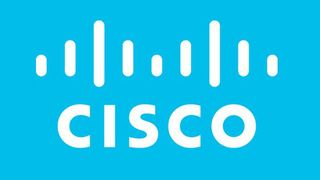Cisco Starts to Get Real About a Virtual CCAP

Seizing on the network functions virtualization trend, Cisco Systems this week introduced the Cloud-Native Broadband Router, billing it as a “containerized, full software rewrite” of Converged Cable Access Platform (CCAP) services.
Cisco, which rolled out the new offering ahead of next week’s AngaCom show in Cologne, Germany, said the approach will give cable operators a new way to support core broadband routing functions while also simplifying network operations, reducing power, cooling and space requirements, and, more generally, cutting down scaling issues associated with traditional purpose-built hardware.
Cisco is introducing the Cloud-Native Broadband Router as operators take a closer look at a new virtualized class of CCAP products that lean more heavily on software capabilities and work in tandem with new distributed architectures that push more electronics to the edge of the cable network.
RELATED: Cable Industry Preps Push to Next-Gen Access Networks, Virtualization
That shift will open up new opportunities for the major incumbent CCAP vendors such as Cisco, Arris and Casa Systems, and open doors to Harmonic, Nokia and other suppliers that are trying to elbow their way in.
RELATED: Nokia Touts Versatility with Virtualized Distributed Platform for Cable Operators
For its new approach, Cisco said it has built a set of microservices using standard tools such as Kubernetes for container orchestration and Docker for creating, deploying and operating containerized apps.
Multichannel Newsletter
The smarter way to stay on top of the multichannel video marketplace. Sign up below.
Jeff Heynen, consulting director at SNL Kagan, said Cisco's software-focused move is in the emerging virtual CCAP arena, noting that the idea being brought forth will help to ease cable operator transitions to distributed access architectures.

Cisco’s approach will also help operators with a major challenge with DAA – managing their optical nodes in the cloud in lieu of having to send a truck to the physical location.
He noted that Cisco’s expertise in the routing world enables it to tack on and apply microservices and containerization, and get a step ahead where some products on the market are today.
“But, ultimately, this is where they are all going to head to," he said.
Though the virtual CCAP market is targeting a model whereby off-the-shelf hardware can be powered by software, it’s also clear that Cisco will continue to move ahead with its cBR-8 chassis and evolve toward a cloud-native version.
That’s a smart move, Heynen said, because operators continue to buy and deploy integrated cBR-8 CCAPs and line cards. This, he said, provides a roadmap to a full, cloud-based platform, “which, in the future, everyone is going to adopt.”
That move toward visualization and distributed access networks will likewise support the move to Full Duplex DOCSIS, which is targeting symmetrical multi-gigabit speeds, as well as small cell networks and 5G networks that are on on the near horizon.
“Everything is moving towards distributed architecture,” Heynen said.
The approach also makes sense from a scalability standpoint, he added, because cable operators around the world are at different stages with respect to deployment and interest in DAA. Some are moving on that now, while others might not be ready for years. Some might target it at a handful of nodes, while others will be doing it for thousands of nodes.
“Taking the next step by disaggregating software from hardware and deploying software-based CCAP services is an opportunity for operators to embrace DevOps and to improve speed to market for new services,” Sean Welch, vice president and general manager for Cisco’s Cable Access Business Unit, said in a statement.
